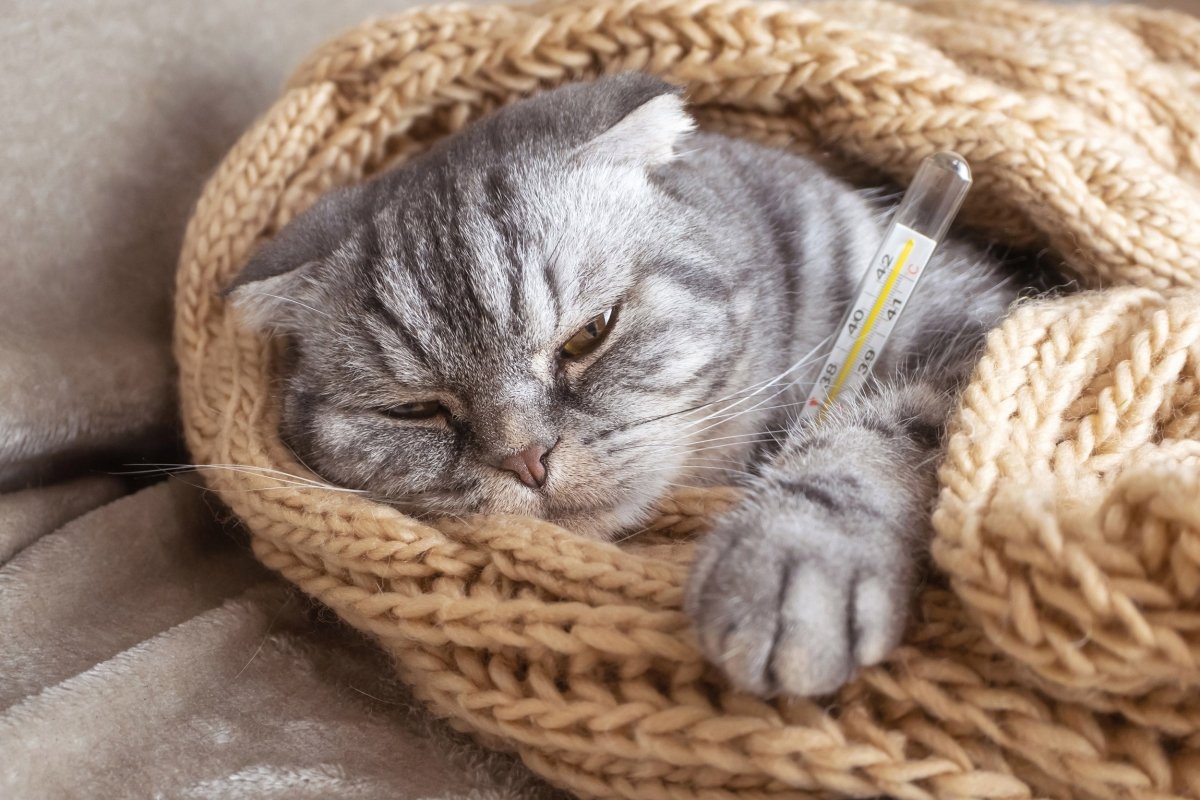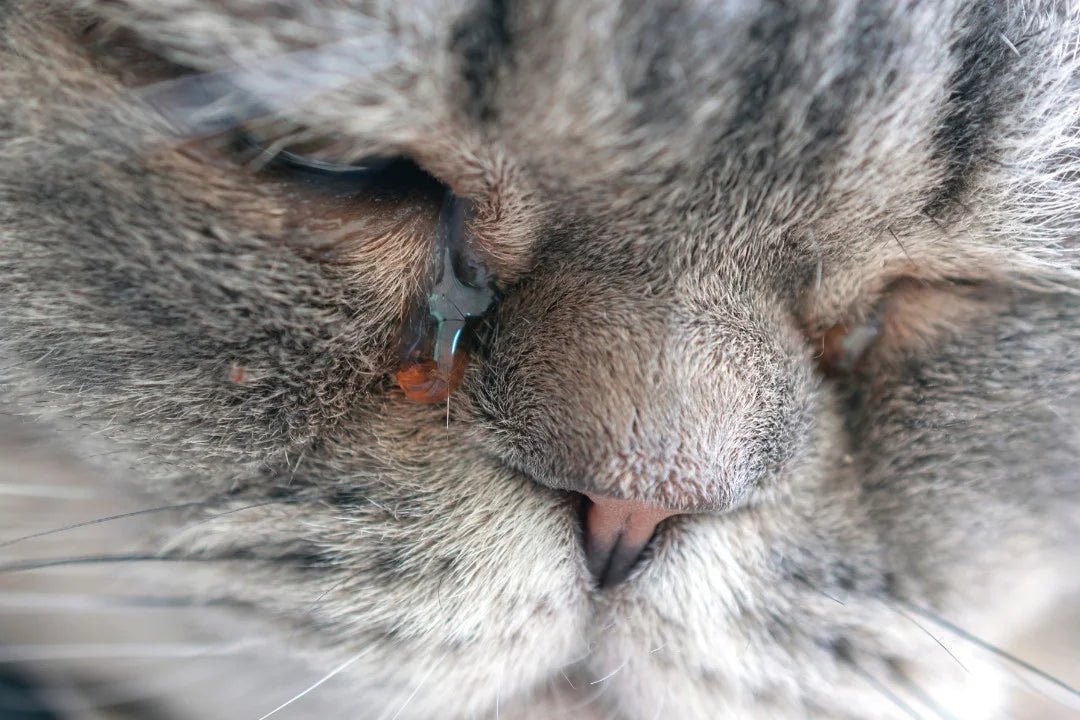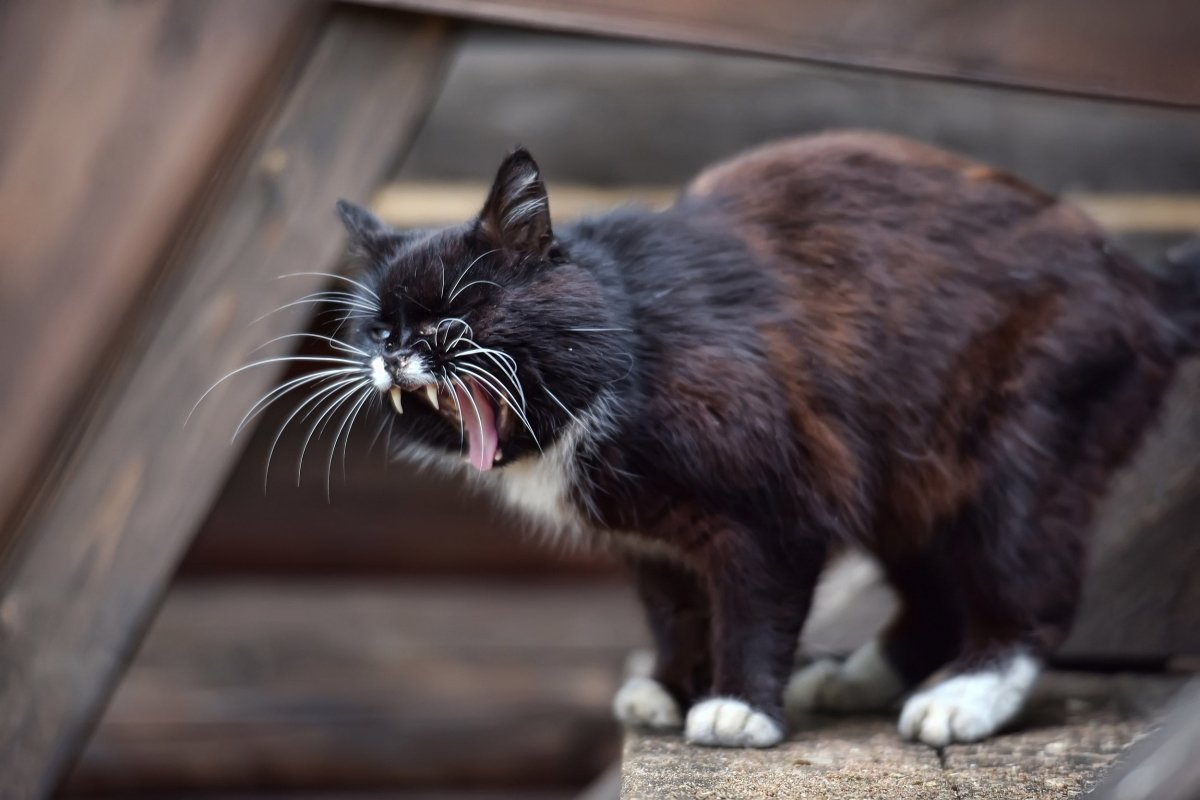Even owners often don't realize that a cat has a fever until it's too late. Unlike dogs, our velvet paws are often much more independent and less in need of a cuddle. However, this can also be a sign that your cat has a fever or is otherwise unwell; if they usually come in for regular cuddles but then suddenly move to an undisturbed, cool place, you should continue to keep an eye on them and possibly take your cat's temperature.
We would like to explain below how best to take your cat's temperature and what other accompanying symptoms can occur when your cat has a fever. You can also find out what the most common causes of fever in cats are, how you can treat it with a few tips and how you can prevent it in the future with a balanced diet of natural AniForte cat food.
Does your cat have a fever? At what temperature does it start?
To find out whether your cat has a fever, you should of course know at what temperature cats are said to have a fever. Unlike humans, who have a normal temperature of 36 to 37 degrees Celsius, cats with a body temperature of 38 to 39 degrees Celsius are absolutely healthy - in kittens, just like in puppies, the temperature can be even higher than in adult animals.
While adult cats with a temperature of 39.2 degrees Celsius or more are said to have a fever, a temperature of up to 39.8 degrees Celsius is nothing unusual in kittens. You should also take "external" factors into account if your cat has a fever. For example, if your kitten has been lying in the blazing sun all morning or if your cat has really exhausted itself before the temperature was taken, the temperature may be temporarily higher without there being any cause for concern.
Nevertheless, fever in cats should not be taken lightly - above 41 degrees Celsius this illness symptom can even become really dangerous, as the body temperature can no longer be regulated by the cat itself. At this point at the latest, you should visit the vet, who will give your cat antipyretics and treat the underlying illness. You can also discuss the administration of natural supplements for cats to support treatment and prevention.
Does your cat have a fever? Measuring a cat's body temperature correctly
If you want to take your cat's temperature, there are a few things to bear in mind. While many cat owners think that taking a temperature in the ear or mouth is more comfortable and less complicated for animals and humans, the risk of injury is much greater here. In addition, rectal measurement provides significantly more accurate values and the cat will not notice the procedure if it is carried out correctly.
Simply use a digital clinical thermometer designed for cats and wet the tip with natural Vaseline or a suitable cream. It is best if a second person distracts your cat while you hold it and insert the outermost tip of the thermometer. Especially our popular AniForte Cat Snacks Chicken & Salmon will make taking a cat's temperature a pleasant experience.
Typical accompanying symptoms in a cat with a fever
If you don't have a clinical thermometer to hand or your cat can't stand having its temperature taken, there are some typical accompanying symptoms that often occur with febrile illnesses. To give your vet as accurate a picture of your cat as possible, you should observe the following symptoms and behaviors more closely:
- Withdrawal or even apathy
- Shivering or trembling
- Refusal to eat
- Increased water intake
- Heavy water loss (dry mucous membranes / dry feces)
- Increased respiratory rate
- Injuries / reddening of the skin
- Eye & nasal discharge / salivation
- Change in mucous membranes (pale / reddened)
- Changed gait (crouched / slow)
If you notice that your cat is not feeling well or you are unsure, call your vet first. They will either ask you to come by with your cat or give you valuable tips for at home to save your cat the often stressful trip to the vet. If there is no way around it, our tried and tested AniForte Bach flowers for cats in globule form can help to calm your cat naturally.
Why does my cat have a fever? The most common triggers
Fever in cats is a defense reaction of the body, which ensures that pathogens are destroyed by an increased body temperature. As long as it is a slightly elevated temperature, your cat compensates for its water loss by increasing its water intake and otherwise appears fit and vital, a fever in a cat is initially a completely natural bodily reaction that can also contribute to recovery.
Nevertheless, there is always an abnormality behind your cat's fever, which should be treated professionally at the latest when your cat's body becomes too weak to defend itself. Of course, you should always rely on the vet's expertise and never intervene with human medicine or with old household remedies or medication that you still have at home - this could be fatal for your cat!
Infectious causes of cats with fever
Often the causes of your cat's fever are infectious - meaning that the illness has been transmitted directly or indirectly to your cat. This is particularly common in outdoor cats that drink from puddles, have contact or fights with other cats or hunt birds and mice. But our indoor cats can also become infected. The most common infectious causes when your cat has a fever are
- Viral infections, e.g. immunodeficiency virus (FIV), infectious peritonitis (FIP), leukemia virus (FeLV).
- Bacterial infections (often after viral infections), e.g. chlamydia, streptococci, anaplasma
- Fungi & parasites, e.g. toxoplasmosis, worms
You can do a lot yourself to protect your cat from infectious diseases. For example, regularly give your cat natural remedies against parasites for cats or feed your cat according to species and needs to strengthen the body's own defenses.
Non-infectious causes of cats with a fever
In addition to infectious diseases, other non-infectious causes can also be behind your cat's fever. These include internal and external inflammation of the tissue, which can unfortunately quickly become chronic if not treated. Joint and dental diseases can also be the cause of fever in cats.
For example, the autoimmune disease FORL, which affects the gums, often leads to secondary infections that can trigger fever, but other autoimmune diseases such as pemphigus foliaceus (blistering of the skin) or lupus erythematosus are also typical causes of cats with fever. However, benign or, in the worst case, malignant tumors and ingested toxins can also cause fever in cats - it is therefore always advisable to take your cat to the vet for an expert diagnosis if it has a fever.
Treating cats with fever & preventing illness
To treat your cat with a fever, the vet will use antipyretics and, above all, treat the underlying illness. This will soon make your pet feel better. Your cat should take it easy and sleep a lot so that it can possibly cure itself if it has a slightly elevated temperature. Offer your cat a darkened and cool room with plenty of water available at all times.
If your cat does not drink more on its own, you can either provide it with a cat fountain or carefully give your cat water in its mouth with a syringe to prevent dehydration and dehydration. If the increased temperature has not subsided within 24 hours or if your cat's fever rises to 41 degrees Celsius or more, you should contact a vet.
In order to prevent fever and fever-inducing illnesses in cats, you should ensure that your cat is fed a balanced diet of high-quality meat, fish and vegetables without artificial additives and preservatives. At AniForte you will find a large selection and premium quality. In addition, our immune system-boosting feed supplements contribute to good all-round care for your cat and strengthen its defenses to successfully ward off febrile illnesses in the future.
Do you still have questions about cats with fever or other issues affecting your four-legged friend? Do not hesitate to contact us.





